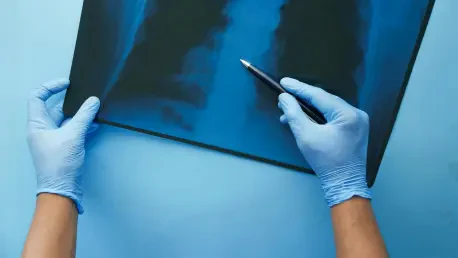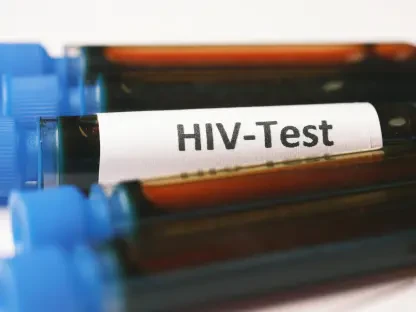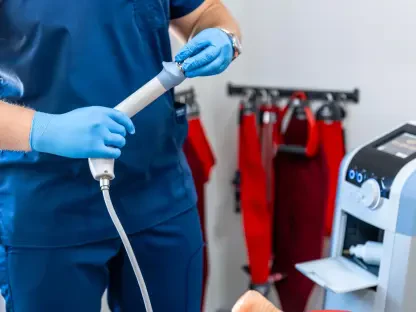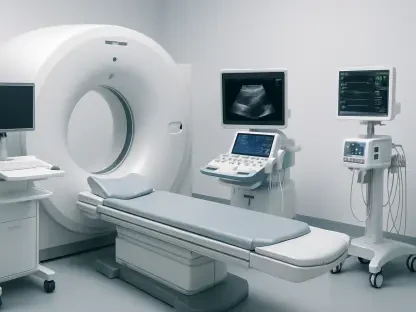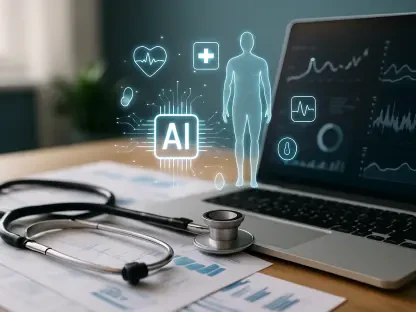Wyoming faces a significant shortfall in radiologists and medical imaging technologists, reflecting a broader national trend highlighting the need for these professionals. According to a comprehensive report by the National Radiological Society, articulated through Medicus Healthcare Solutions, Wyoming, along with several other states, has just nine radiologists for every 100,000 people. This number pales in comparison to the national average of 13, underscoring a critical bottleneck in healthcare services. Compounding this issue is the burgeoning demand for imaging services, fueled by an aging demographic. Estimates reveal that 77 million residents of the United States will be 65 or older by 2034, driving an increased reliance on medical imaging for their care.
Struggles in Meeting Increasing Demand
Burgeoning Need for Medical Imaging
Contributing to the shortfall is the rapid advancement of imaging technology, which elevates the demand for skilled professionals capable of operating sophisticated equipment. Barry Nielsen, CEO of Casper Medical Imaging & Outpatient Radiology, underscores this gap as being prevalent across various medical specialties. His institution, serving multiple Banner Health sites within Wyoming and extending its support to other regional hospitals, is juggling two unfilled radiologist positions. This scenario is not confined to Wyoming alone but spans across neighboring states like Colorado and Montana, signaling a regional challenge in meeting imaging needs.
The situation at Sweetwater Memorial Hospital in Rock Springs mirrors this shortage. Despite their efforts, numerous technologist positions have remained vacant for over a year. Key factors aggravate this status quo, including the retirement of veteran technologists, an upsurge in demand for imaging services, and the lingering impact of COVID-related burnout. Such circumstances have led to an operational strain on the hospital’s ability to provide timely and effective imaging services, thereby affecting patient care.
Training Shortages and Residency Gaps
The Medicus Healthcare Solutions report from 2023 highlights a stark reality where half of the available radiology job openings remained unoccupied. The disconnect in the pipeline is further evident from the substantial number of newly graduated medical students who failed to secure residency positions in diagnostic or interventional radiology. This shortage in adequately trained new professionals entering the field compounds the existing gap between demand and supply. These issues reflect systemic challenges in the training and employment landscape, where increased educational initiatives are needed to accommodate evolving healthcare demands.
Statistics also indicate that a significant proportion of radiologists, approximately 29 percent, have temporarily taken up positions, with an even larger percentage engaging in remote image interpretation services. These arrangements, while innovative, do not fully bridge the gap between skill availability and actual clinical needs. Even with the addition of 29 new residency positions for diagnostic radiology recently, projections cast a shadow over the future, with an anticipated shortfall of over 3,000 radiologists by 2055 compared to expectations set before the pandemic reshaped the workforce landscape.
Consequences of Technological Advancements
Role of Imaging in Modern Medicine
As Nielsen points out, imaging has become a lynchpin in modern patient care, transcending mere diagnosis to influence treatment decisions across a range of medical specialties. The rapid advancement of radiology has intensified the necessity for proficient radiologists who can interpret complex imaging results accurately. This reliance on imaging is not just for hospitals but extends to outpatient centers, which increasingly depend on radiological assessments to formulate therapeutic strategies.
The burgeoning role of imaging in healthcare is evident through its integration into routine assessments and specialized diagnostic procedures. With technologies evolving rapidly, from MRI to CT and PET scans, the demand for skilled practitioners to harness these advancements has never been higher. Consequently, the shortfall of qualified personnel introduces critical delays in diagnosis and treatment, ultimately impacting patient outcomes.
Strategic Solutions and Future Prospects
Despite the obstacles posed by the evolving healthcare environment, strategic interventions can mitigate these challenges. Increasing residency positions is a start, yet more comprehensive solutions that encompass policy formulation, educational reform, and technological investments are essential. Collaborations among healthcare providers, educational institutions, and policymakers can foster a more sustainable model for training and retaining radiologists.
Furthermore, leveraging technology itself might play a role in alleviating some of the pressures. Artificial intelligence and machine learning applications in radiology are emerging fields that hold potential in supporting radiologists by handling routine tasks and allowing specialists to focus on more complex cases. As the industry adapts, integrating these technologies could enhance efficiency and make up for human resource deficits without compromising care quality.
Path Forward in Addressing the Radiologist Shortage
Wyoming is currently experiencing a substantial shortage of radiologists and medical imaging technologists, mirroring a larger national trend that underscores the urgent need for these professionals. As per a detailed analysis by the National Radiological Society, distributed via Medicus Healthcare Solutions, Wyoming along with several states has only nine radiologists per 100,000 people. This figure is notably lower than the national average of 13, highlighting a significant bottleneck in healthcare services. The situation is further exacerbated by the growing demand for imaging services, which is driven primarily by an aging population. Projections indicate that by 2034, approximately 77 million Americans will be 65 or older, leading to an increased reliance on medical imaging as a critical component of their healthcare. Addressing these shortages is essential to ensure that the healthcare infrastructure can adequately meet the evolving needs of the populace and continue to provide efficient and effective care.
